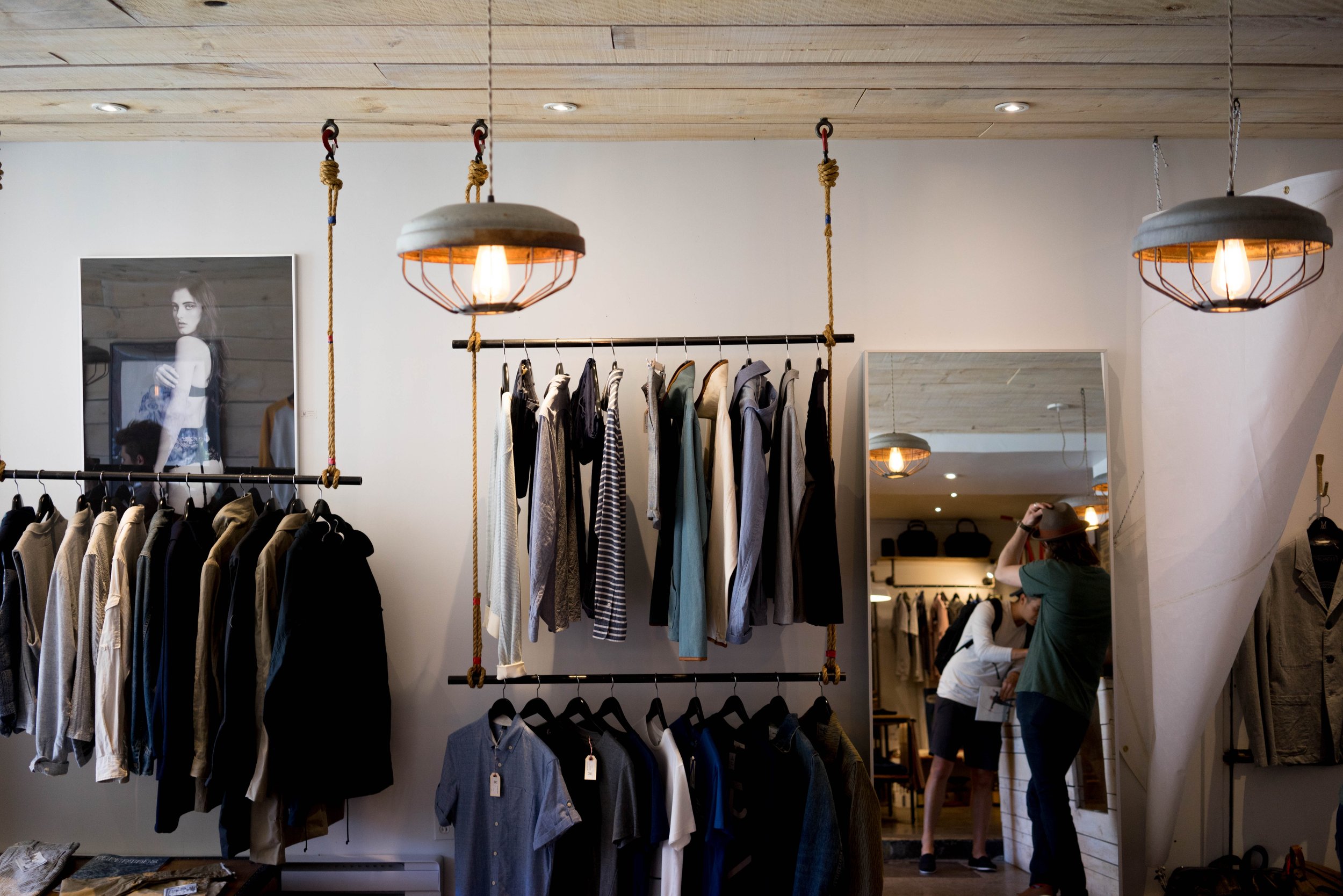Exploring the Advancement and Impact of Apparel on Modern Style Trends
The evolution of clothes has actually dramatically affected modern-day fashion fads, merging historic precedents with sophisticated developments. Famous numbers like Coco Chanel and Yves Saint Laurent transformed the fashion business by introducing ideas that focus on comfort and accessibility, which proceed to resonate today. Technical strides in locations such as 3D printing and smart fabrics are redefining style possibilities and consumer experiences (boutique fashion). Furthermore, the growing focus on inclusivity and sustainability is improving market standards. As we consider these complex impacts, one must question how these elements collectively redefine style's duty in mirroring and forming modern society.
Historical Fashion Influencers
In the tapestry of fashion background, specific numbers have actually left an indelible mark, forming the patterns and styles that specify entire eras. Coco Chanel, an innovative developer, redefined females's fashion by introducing comfy, stylish clothing that departed from limiting bodices.
Elsa Schiaparelli is another essential number, renowned for her avant-garde styles that incorporated surrealist art, teaming up with Salvador Dalí to develop whimsical items that challenged conventional appearances. Her cutting-edge use color and strong patterns resounds in modern fashion. Yves Saint Laurent, meanwhile, democratized haute couture with prêt-à-porter collections, bringing runway designs to the masses and establishing a precedent for modern-day ready-to-wear lines.
These visionaries, among others, not just revolutionized fashion in their times however additionally established enduring trends that resonate in today's fashion business, providing a foundation upon which contemporary developers proceed to construct and introduce. Their heritages underscore the significance of imagination and bold in vogue's ever-evolving story.
Technical Advancements in vogue
Among the dynamic landscape of the apparel industry, technical innovations stand at the center of innovation, reshaping just how designers develop and customers involve with style. The combination of 3D printing has reinvented style procedures, enabling designers to experiment with complex frameworks and lasting products that were previously inconceivable. This technology helps with fast prototyping, lowering waste and accelerating production times.

Smart fabrics, installing innovation into materials, are additionally transforming the market. Innovations like temperature-regulating and self-cleaning fabrics use boosted functionality and comfort. Wearable modern technology, incorporating functions like physical fitness monitoring and communication, adds a brand-new measurement to style, merging looks with practicality.
Social Changes and Design
As technical advancements continue to reshape the garment industry, cultural shifts are similarly prominent, redefining design and customer choices. Recently, the surge of social media sites systems has actually increased the circulation of international style fads, permitting varied cultural influences to converge and coexist. This electronic interconnectivity has actually promoted the fast exchange of ideas, leading to a much more comprehensive and eclectic interpretation of design that mirrors the complex nature of modern society.
Social understanding and gratitude have actually motivated designers to attract inspiration from a broader range of ethnic and historic contexts, incorporating traditional concepts with contemporary aesthetics. This combination has actually resulted in style that resonates with a larger target market, promoting a sense of identification and belonging across various demographics. Additionally, the raising demand for personalization has driven brand names to supply adjustable options, enabling customers to share individuality while mirroring their social heritage.
In addition, click for more shifting social values have actually influenced style, with inclusivity and diversity coming to be central motifs. The industry has started to embrace versions and influencers of numerous body kinds, ethnicities, and gender identities, tough conventional elegance criteria. This transformation highlights the power of social shifts fit the future of fashion, as style comes to be an extra authentic expression of cumulative and individual identification.
Sustainability and Modern Design
While the style industry proceeds to develop, the important for sustainability has become progressively urgent, affecting contemporary design methods. The rise of slow style, which emphasizes high quality over quantity, urges customers to invest in classic pieces instead than short-term fads.
In addition, contemporary style is characterized by its technology in reducing waste and advertising circularity. This approach not only alleviates environmental impact however additionally improves the social duty of style residences.

Future Trends in Style

Sustainability check these guys out will certainly remain to be a driving force in forming future fashion trends. The market is increasingly taking on eco-friendly products and moral production approaches, responding to a growing customer demand for accountable methods. Technologies such as bio-fabricated materials and closed-loop recycling systems are established to redefine just how apparel is created and eaten, reducing environmental impact while preserving style and high quality.
Social shifts, including the increase of inclusivity and diversity, will also play a crucial role. As society comes to be much more familiar with social issues, fashion is expected to end up being a platform for expression and change. Designers will likely concentrate on developing collections that show a broader series of experiences and identities, championing representation and access.
Verdict
The advancement of apparel substantially impacts modern-day style trends, where historical influences merge with modern designs. Key numbers like Coco Chanel and Yves Saint click this link Laurent have redefined style, while technical technologies such as 3D printing and smart textiles broaden creative possibilities. Cultural changes in the direction of inclusivity and sustainability urge brands to take on ethical techniques and accept diversity. This recurring advancement highlights fashion's duty as a mirror to social values and technological improvement, recommending a future abundant with innovation and inclusivity.
The advancement of clothes has significantly affected contemporary fashion fads, combining historical precedents with advanced innovations.Among the vibrant landscape of the fashion market, technical developments stand at the center of technology, improving just how designers develop and customers involve with style.While the style sector proceeds to develop, the necessary for sustainability has become progressively immediate, influencing contemporary design methods. As sustainability becomes embedded in contemporary style, it leads the means for a more liable and conscious fashion sector.
The development of clothing dramatically influences modern-day fashion fads, where historical influences merge with modern styles.